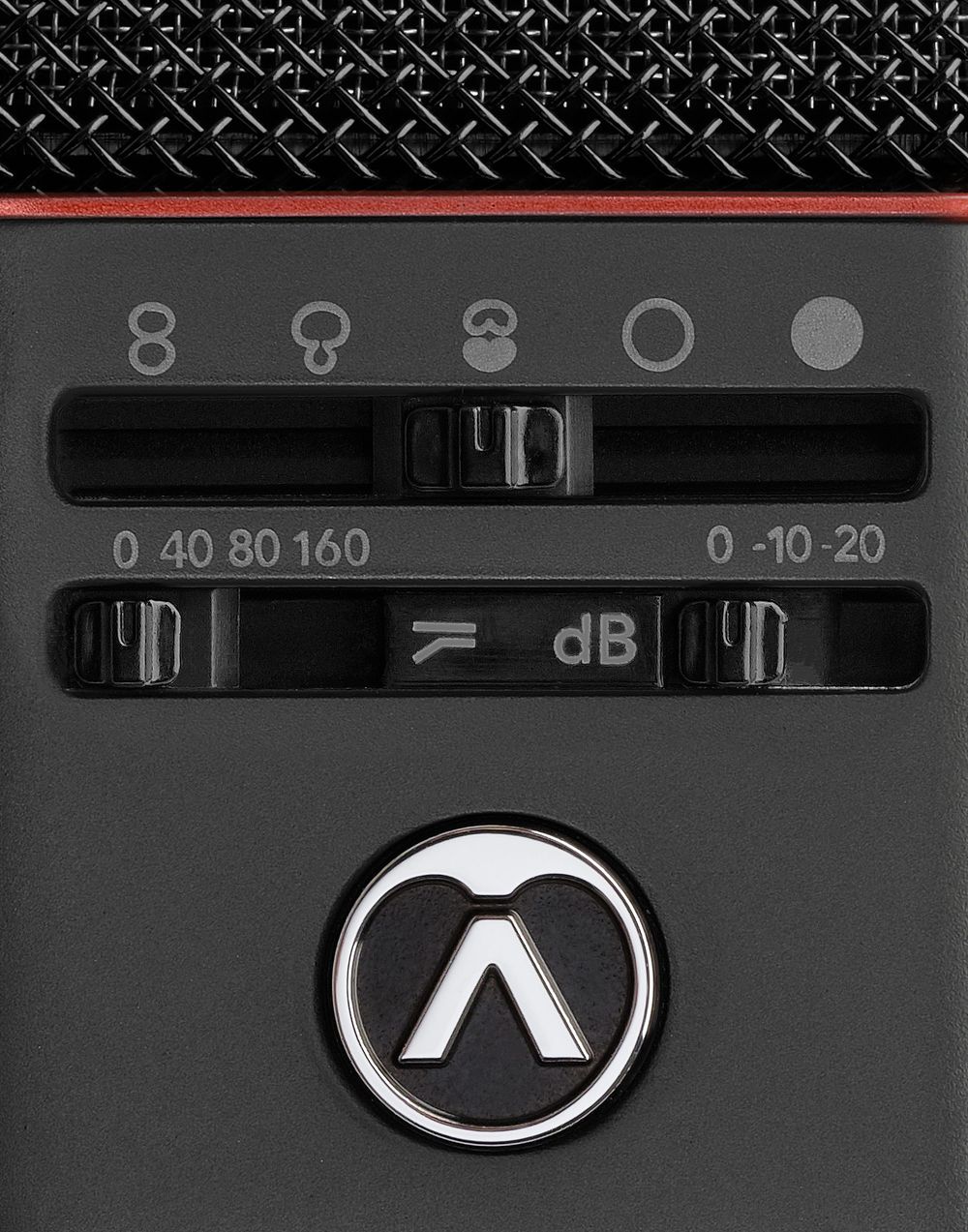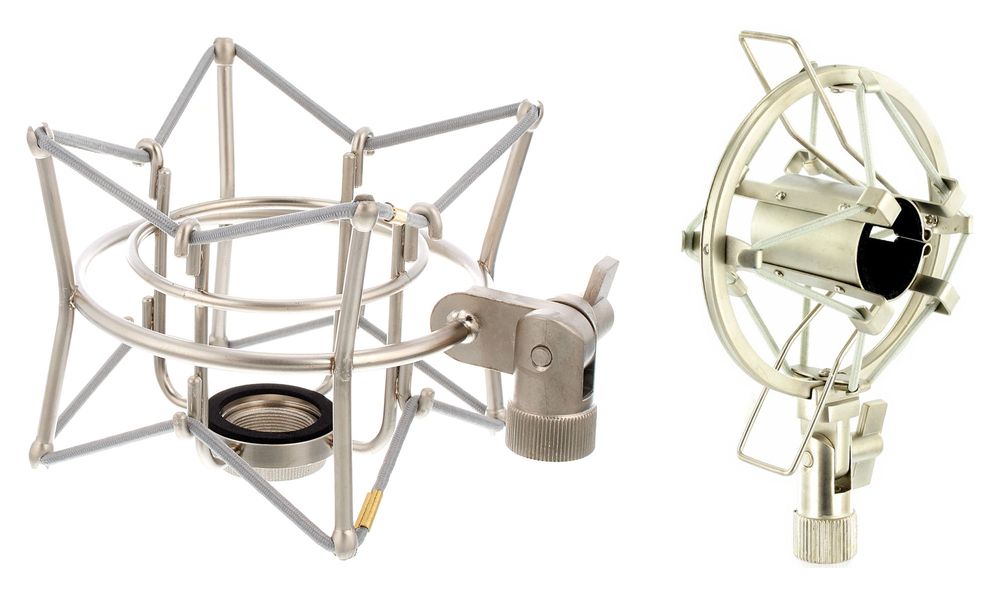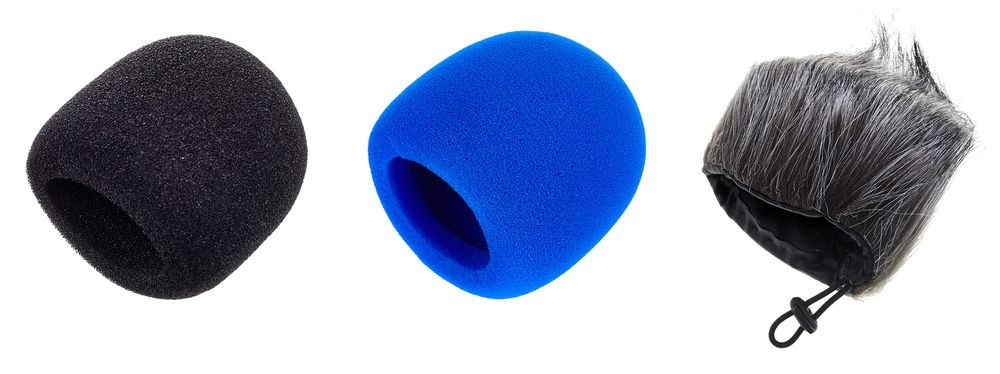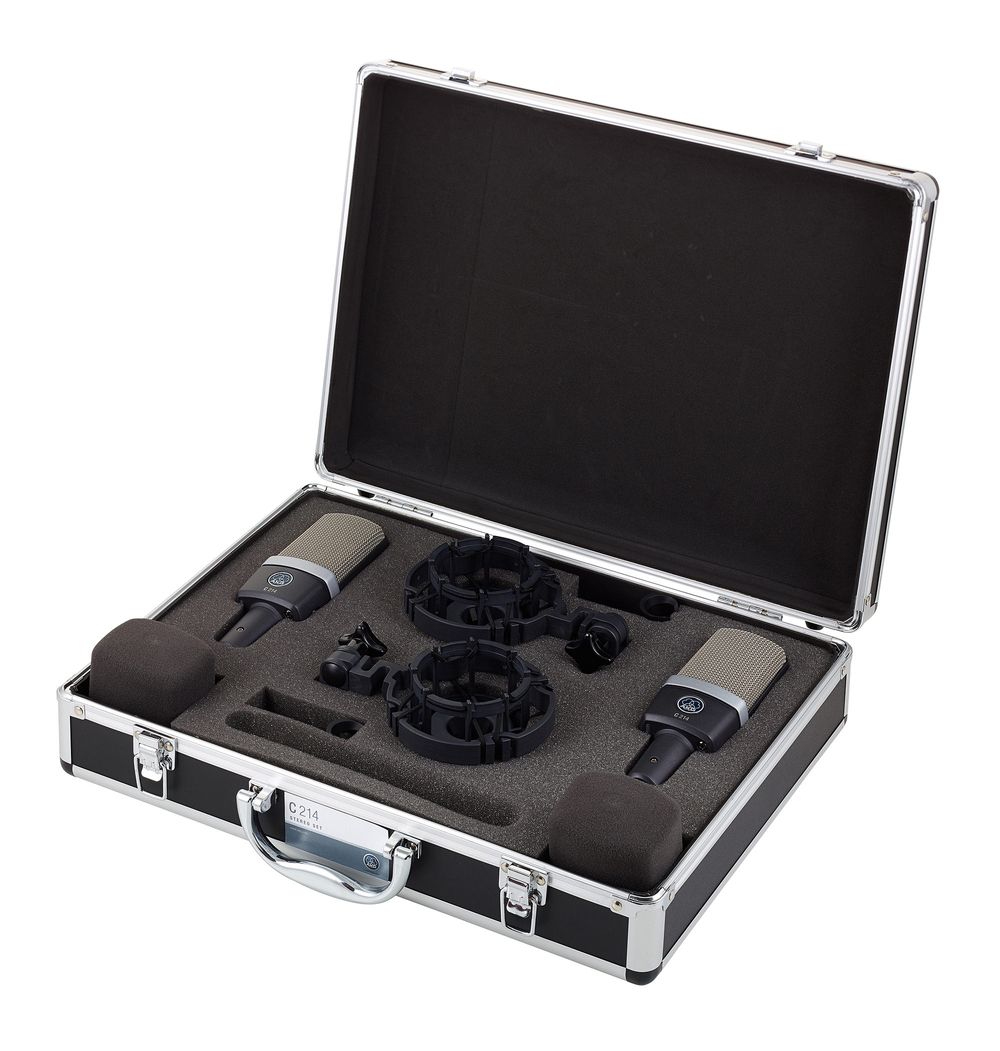8. Extras & Accesories
Pad
Many large diaphragm condensers have a switch to reduce the sound level right behind the capsule, so very loud sources wont overload the internal amplifier electronics or your microphone preamp. In other words, a pad switch gives you higher maximum SPL handling. However, you should engage the pad only for very loud sources. On low level sources an unnecessary pad decreases the noise performance.
Low Cut (Hi Pass)
A low cut switch is a nice extra feature (hi pass is just a different name for the same thing). It helps you to reduce rumble, and you can also use it to compensate for the proximity effect. Thats a bass boost that happens when the sound source is very close to the mic. You may have noticed that some radio announcers have very full and sonorous voices thats because they talk close to the microphone. Bass frequencies are boosted due to the proximity effect. Sometimes this low frequency boost can be a bit too thick and gets in the way of bass instruments. By engaging the low cut switch you get a more natural sound when close miking.
Elastic Suspension / Shock Mount
Even though you can reduce rumble by engaging the low cut filter, its better, of course, to eliminate rumble before it even hits the microphone. An elastic suspension or shock mount, sometimes called spider shock mount, does just that: it de-couples the microphone from its stand. Large diaphragm condensers are designed for studio use and are much more susceptible to rumble and mechanical vibrations. A shock mount makes sure you get a clean recording even if, say, the singer inadvertently touches the mic stand or jumps up and down while performing. A shock mount can spare you a lot of trouble and is a very useful accessory. Many large diaphragm condensers come with a shock mount included. Usually thats cheaper than buying it separately.
Wind Screen
Some LD condensers come with a large foam wind screen. As the name suggests, a wind screen is meant for outdoor use. A foam wind screen is also useful for miking kick drum. Apart from loud bass frequencies, the kick also produces an air blast. Condenser mics dont like air blasts, and if you place them in front of or inside a kick drum, that air blast may stretch the delicate diaphragm over time. So if you decide to use a condenser mic on kick drum, better use a wind screen.
Dont use a wind screen in place of a pop screen when recording singers. Wind screens do reduce plosives (Ps and Bs) somewhat, but theyre neither as effective nor as sonically transparent as a true external pop screen. Unfortunately, few LDs come with a pop screen included. A pop screen is a true necessity for recording vocals or spoken word.
Microphone Box/Case
Most large diaphragm condensers come in a microphone case or a storage box. Cases are more practical, wooden storage boxes look nicer. After recording, you should always put your condenser mics back into their storage boxes/cases to keep them dry, clean, and dustfree.






